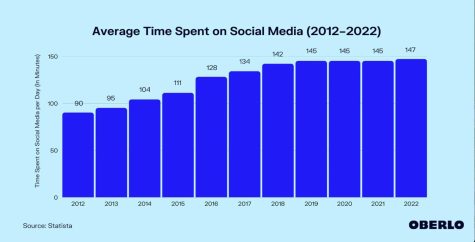In the fast-paced digital age, the term ‘starving artist’ is becoming a thing of the past. With the rise of online platforms, the creator economy is set to soar to new heights in 2023, providing creators with unprecedented opportunities to turn their passions into profit. The creator economy encompasses the ecosystem of creators, platforms and consumers that enable the creation and distribution of digital content, such as videos, podcasts and music. It also includes the monetization of that content through advertising, sponsorships and merchandise sales.
One of the driving forces behind the market’s projected growth is an increase of competitors in the content hosting business. For example, YouTube is no longer the only site where it is lucrative to monetize content. TikTok and Instagram have successfully gained market share through their use of short-form content. Meanwhile, Rumble has made big moves by promoting a platform that is censorship-free.
Furthermore, Twitter has the potential to challenge YouTube with its unique blend of text, short videos and upcoming features. Elon Musk has mentioned that Twitter will likely pursue hosting long-form videos to compete with YouTube and is hoping to provide better financial incentive s for creators by addressing the weaknesses of YouTube’s current advertisement system. If Twitter pursued hosting long-form videos on its site, the entire industry would become more competitive and the size of the market would grow in the process.
s for creators by addressing the weaknesses of YouTube’s current advertisement system. If Twitter pursued hosting long-form videos on its site, the entire industry would become more competitive and the size of the market would grow in the process.
Statistically speaking, social media use has continued to increase each year since its creation. In 2012, the average person spent 90 minutes a day on social media; meanwhile, in 2022, that number climbed to 147 minutes per day. The increase in the average time spent on social media is a clear indication of the integral role social media plays in individuals’ daily lives. Increased social media usage holds significant implications for the creator economy, as it allows creators to expand their reach and monetize their content, ultimately driving growth.
I am a former content creator who built up a following for many years. From my perspective, the industry has shifted immensely. The amount of output, discoverability and money in the industry is night and day from when I joined. The use of algorithms designed to maximize content consumption makes it easier than ever to be discovered and grow a large following. More institutional advertising has flooded the market with money which previously wasn’t there.
Those opposed to the creator economy’s growth predict that people will start to spend less time on social media in 2023, which will result in a shrinkage of the creator economy. This argument suggests that as people become less engaged with social media, they will be less likely to consume digital content. The decrease in engagement may stem from privacy concerns, the impact of social media on mental health or a shift in people’s interests. This, in turn, would reduce the demand for advertising, sponsorships and merchandise sales, which are primary sources of revenue for creators. As a result, the number of creators, platforms and consumers would decrease, leading to a smaller and less profitable creator economy. However, this is highly unlikely. Social media usage and the market cap of the creator economy have climbed to new heights each year; the idea that people would change their hardwired content consumption habits overnight is unfounded and illogical.
The creator economy will grow larger this year due to increased competition in the market. Furthermore, the social media consumption habits of the average consumer are growing year after year, paving the way for content to become an even hotter commodity.









